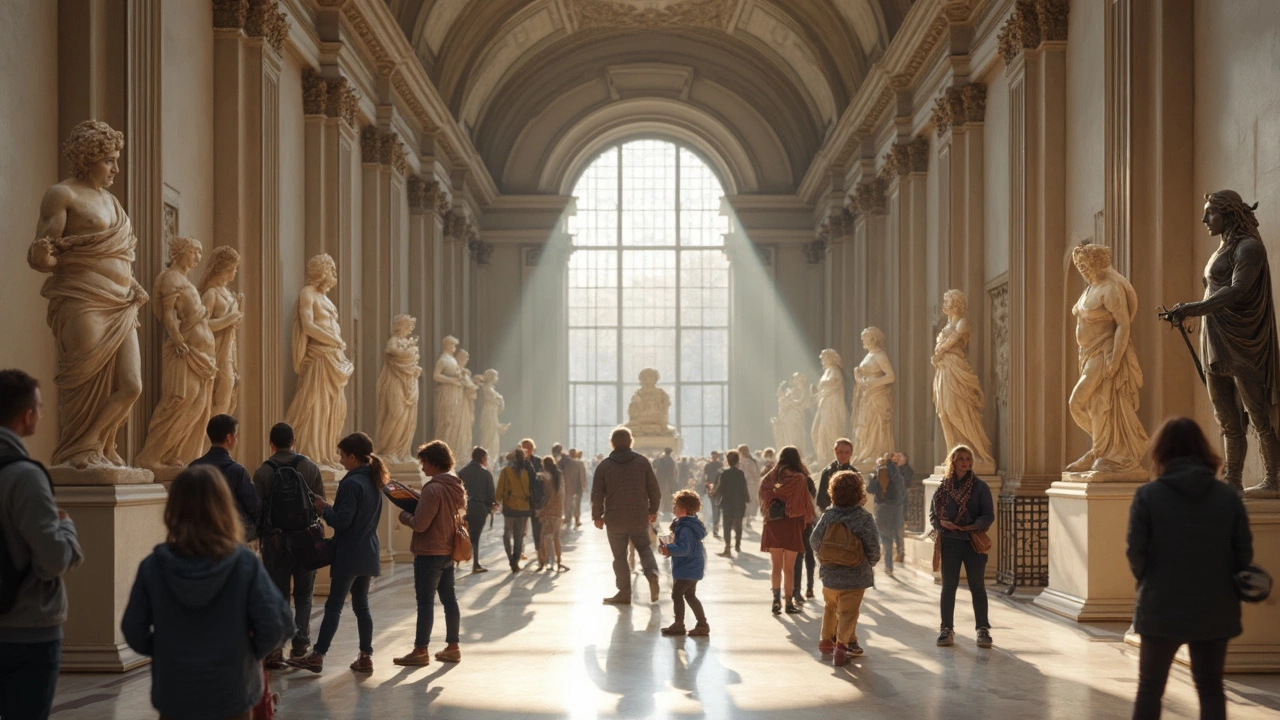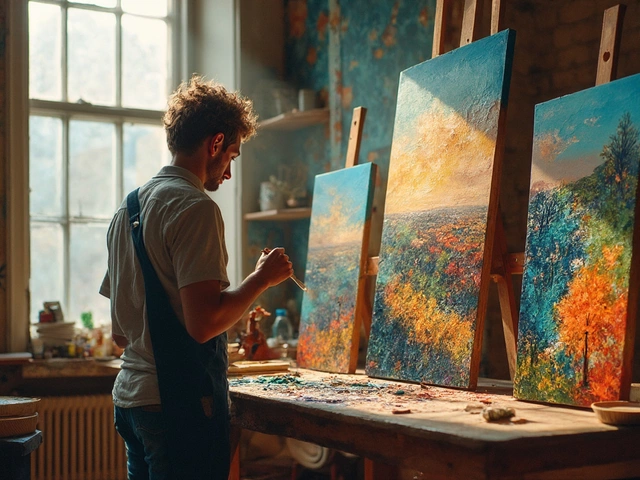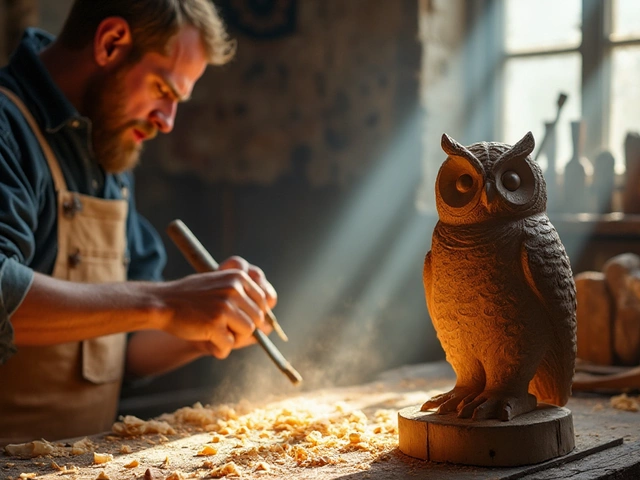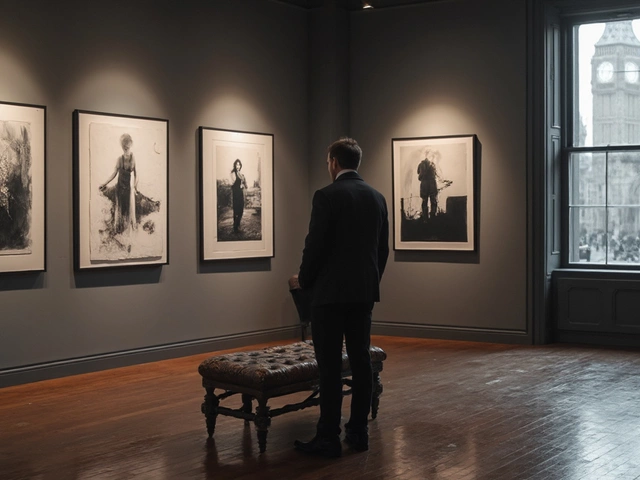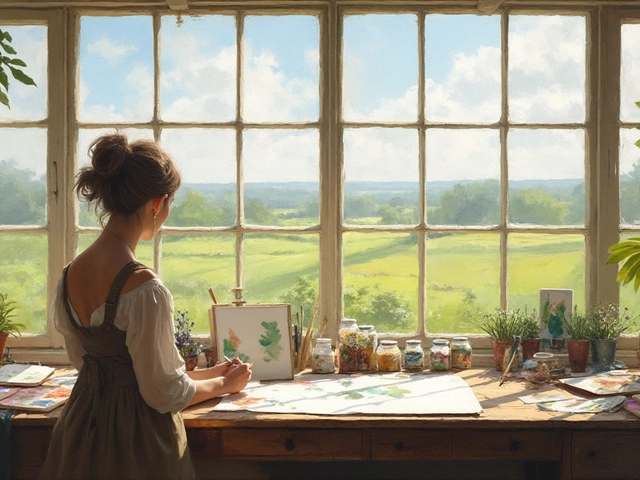If you ask ten people to name a famous sculptor, most will probably jump straight to Michelangelo. There's a reason his name's on the tip of so many tongues. But is he truly the biggest legend in sculpture, or are there others giving him a run for his money?
What makes a sculptor 'famous' anyway? It's not just about fancy museum displays or how expensive their work gets at auction. It's about who created images burned into your memory, who changed the rules, and who still gets talked about centuries later. Some sculptors made their mark with sky-high marble statues, while others turned weird materials or modern tech into art that's hard to forget.
If you're just getting started with sculpture art, knowing the big names and what sets their work apart can really change how you see things next time you're face to face with a statue. This isn't just art history—it's about why we care about certain sculptors more than others, and how some pieces of sculpture seem to stick in our brains forever.
- Defining Fame in the Sculpture World
- Michelangelo: The All-Time Icon
- Contenders from History and Today
- Sculptures Everyone Remembers
- How Sculptors Became Legends
- Tips for Experiencing Sculpture Art Now
Defining Fame in the Sculpture World
Fame in the world of sculpture isn’t just about being well-known at an art school or in fancy galleries. It’s about recognition by regular people, the media, and across different countries and cultures. For sculptors, getting this kind of fame can be tough—think about it, a lot of folks can name a painter, but naming a famous sculptor? That usually takes some thought.
So how do sculptors land in the history books? It’s a mix of several things. Their work needs to be more than just skillful—it’s got to be original and stick in people’s heads. It helps if their statues or monuments end up in public places, making them hard to miss. Some sculptors became famous because their work was tied to major events or big shifts in how people see the world. And yes, a bit of good luck (and clever self-promotion) never hurts either.
Here’s what usually tips the scale for fame in sculpture:
- Creating art that’s ground-breaking or shocking for its time
- Being commissioned for public monuments or places lots of people visit
- Pulling off technical feats—like making marble look like soft skin or folding fabric
- Having recognizable pieces featured in movies, schoolbooks, or pop culture
- Influencing other artists or art trends for decades
Let’s check out how some of these factors have panned out in reality. Look at this quick breakdown of how different sculptors stack up when it comes to name recognition and impact:
| Sculptor | World Recognition | Iconic Works | Years Active |
|---|---|---|---|
| Michelangelo | Legendary (worldwide) | David, Pietà | 1490s–1560s |
| Auguste Rodin | Very high (especially in Europe) | The Thinker, The Kiss | 1870s–1910s |
| Henry Moore | Well-known (public art) | Reclining Figure | 1920s–1980s |
| Ai Weiwei | Rising (modern and political art circles) | Sunflower Seeds, Forever Bicycles | 1990s–today |
If you’re trying to judge who’s the most famous, check not just the name, but if people can match a face—or statue—to it. Does the art spark talk, controversy, or even memes? High fame often means their work jumps outside the museum, landing in real life, social media, or daily chatter.
Michelangelo: The All-Time Icon
If you’re hunting for the answer to “who is the most famous sculptor?” most roads lead to Michelangelo. Born in 1475 in Caprese, Italy, he’s the guy behind the jaw-dropping statue of David and the mind-bending Pietà, both of which still draw crowds today. The statue of David alone stands over 17 feet tall and is carved from a single block of marble. That’s a chunk of rock he turned into one of the most recognizable faces in art.
Michelangelo didn’t just make art for fun—he tackled commissions that normal mortals would run from. The Pietà, which he finished in his early twenties, shows how he could pack huge emotion into stone. Even non-art buffs recognize this famous sculpture from a mile away.
He didn’t stick to one thing either. Michelangelo could paint, sketch, and was even handy with architecture, but he always called himself a sculptor first. His work on the tombs in Florence, the Medici Chapel, and the Moses statue all back up his claim. Nothing about his art feels boring or stuck in its time; it just has that wow factor, and it’s easy to see why people still line up to see what he left behind.
“Michelangelo’s David remains a beacon of the Renaissance spirit—where human potential, beauty, and creativity blend into something unforgettable.” —The Art Institute of Chicago
He had a reputation for being stubborn and sometimes tough to work with, but maybe you have to be when you’re setting the bar for what everyone expects from sculpture. His influence shows up everywhere: from classroom slideshows to pop culture spins in movies and ads. It’s honestly hard to top his level of fame in the world of sculpture.
Contenders from History and Today
Michelangelo grabs the spotlight, but plenty of other sculptors, from way back to right now, have shaped how we think about sculpture. Each brought something new—whether that's shock value, unreal skill, or just total rule-breaking.
Take Auguste Rodin, for example. His piece "The Thinker" is everywhere—from textbooks to coffee mugs. Rodin broke old rules and made sculptures feel alive. He wasn't just carving stone; he was digging into human emotion.
Gian Lorenzo Bernini was the rockstar of the Baroque era. His "Ecstasy of Saint Teresa" feels like it could start breathing right in front of you. Bernini mixed drama and movement, making marble look soft. Art historians point out that without Bernini, sculpture would be a lot less interesting.
Fast forward, and you hit Constantin Brancusi. He kept things minimal but powerful. “Bird in Space” might seem simple, but it shook art galleries up in the 1920s. If you've ever wondered where modern sculpture started, Brancusi's likely the answer.
Don’t miss Louise Bourgeois, either. Her giant spider piece, "Maman," turned heads and still freaks out plenty of museumgoers today. She pushed boundaries and got people talking about what sculpture could mean—especially for women in art.
And then there’s Jeff Koons. Like him or hate him, his shiny balloon animals have sold for millions. Koons toys with what art can be and challenges the old-school crowd. His "Rabbit" statue hit the auction block in 2019 for over $91 million.
Check out some names and facts in the quick table below. Proof that the world of famous sculptor isn’t just one guy with a chisel:
| Sculptor | Era | Signature Work | Noteworthy Fact |
|---|---|---|---|
| Michelangelo | Renaissance | David | Completed "David" at age 29 |
| Auguste Rodin | Late 19th Century | The Thinker | Challenged academic traditions |
| Gian Lorenzo Bernini | Baroque | Ecstasy of Saint Teresa | Transformed Roman public spaces |
| Constantin Brancusi | Modern | Bird in Space | Faced legal drama over what counts as "art" |
| Louise Bourgeois | Contemporary | Maman | Opened doors for female sculptors globally |
| Jeff Koons | Contemporary | Rabbit | Holds record for most expensive sculpture by a living artist |
There are plenty more out there, but these artists hit the top tier for changing the game—each in a totally unique way. Whether you love classic or wild modern stuff, there's a sculptor who'll have you looking twice.
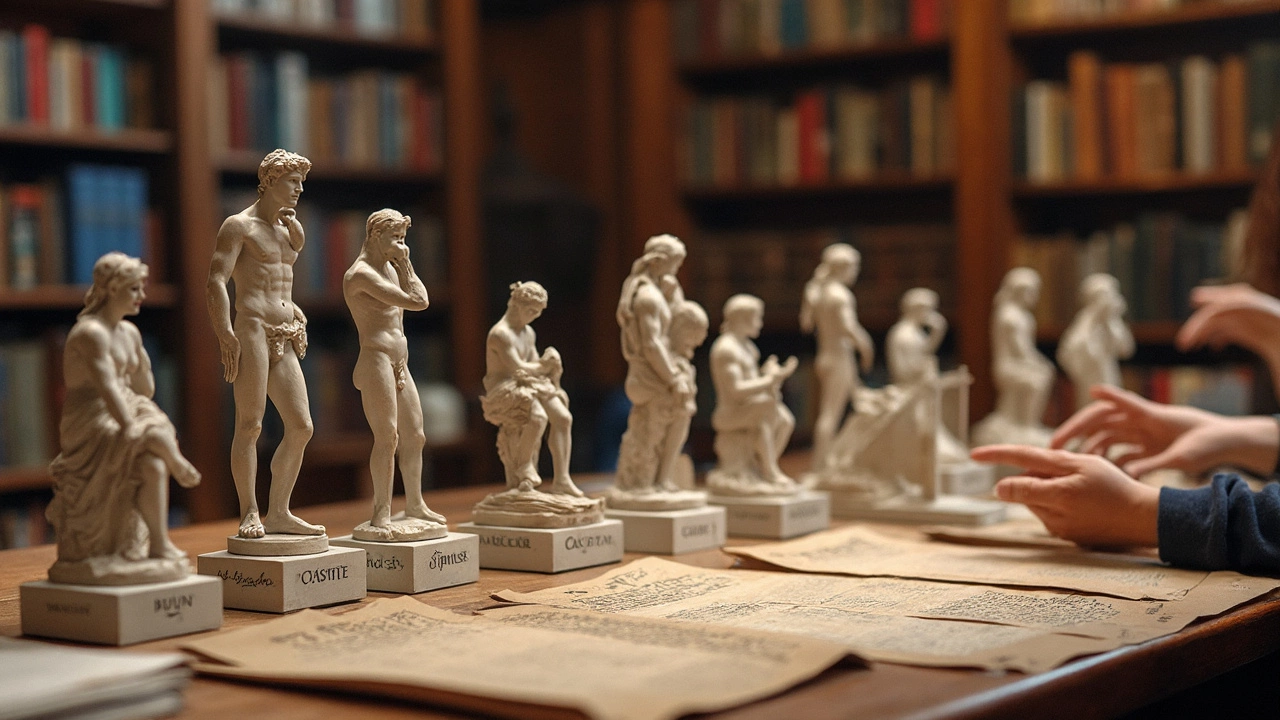
Sculptures Everyone Remembers
Some sculptures are instantly recognizable—even if you don’t know who made them. Think about Michelangelo’s David. Towering over 17 feet tall, this statue stands in Florence, Italy, and has crowds squeezing in for a selfie every single day. Carved from just one giant block of marble, David’s realistic muscles and intense stare show off Michelangelo’s wild skill and attention to detail. It’s often called the best example of Renaissance sculpture, and for a lot of people, it’s the first thing that comes to mind when they imagine a famous sculptor’s work.
Then there’s Auguste Rodin’s The Thinker. With his chin resting on his fist, this little bronze guy shows up everywhere from museums to memes. Rodin designed the piece in the late 1800s, and hundreds of casts have been made since. You can spot one at the Musée Rodin in Paris, but other copies live around the globe. The pose—the classic "deep in thought" look—makes it a go-to symbol of philosophy and creative struggle.
You can’t leave out the Statue of Liberty, either. Designed by French sculptor Frédéric Auguste Bartholdi, this colossal artwork was shipped in pieces from France and assembled in New York Harbor in 1886. For many people, the Statue of Liberty is a symbol of freedom and new beginnings—way more than just a giant statue.
Modern art brought us pieces like Constantin Brancusi’s Bird in Space. It’s not shaped like any regular bird, but those smooth, soaring lines grabbed the art world’s attention back in the 1920s. The sculpture was even at the center of a U.S. court case to decide if abstract art could be considered “art” at all or just metal lumps. Spoiler: Brancusi won.
One more you’ve probably seen in photos or on social media: Mount Rushmore. Gutzon Borglum carved U.S. presidents’ faces into a mountain, making a tourist hotspot that pops up in movies and textbooks. It’s proof that sculptures can go way, way beyond stone figures standing in museums.
- Tip: When you spot a sculpture that keeps showing up on postcards, movies, or even emojis, it’s usually because it struck a nerve and stuck in everyone’s collective memory. Try asking yourself what about its shape, size, or expression makes it so unforgettable—that’s often what great sculptors get right.
How Sculptors Became Legends
Getting legendary status in sculpture isn’t about luck. It takes skill, guts, and a knack for getting people talking. Some names—like Michelangelo and Auguste Rodin—pop up everywhere you look, but there’s a set of clear reasons why certain sculptors stand out way above the rest.
First off, lasting fame is usually tied to making something nobody’s ever seen before. Take Michelangelo’s “David.” When it showed up in Florence in 1504, the shock and buzz were so big, people lined up just to snap a look. “The Thinker” by Rodin? Same deal—instantly eye-catching, totally new in its time.
But it’s not just about big reveals. Being a legend means people keep talking about your work long after you're gone. Your art ends up in museums, gets borrowed for movies and ads, and pops up in textbooks. Artists like Henry Moore, known for modern abstract shapes, changed what people thought sculpture could be. The conversation only got louder.
Here’s what pushes a sculptor onto the list of legends:
- Pioneering new methods or styles (like using bronze in unexpected ways or mixing classic and modern ideas)
- Choosing subjects that spark the public’s imagination
- The ability to get noticed by both critics and regular folks
- Works that survive for centuries and stay relevant
- Influencing the next generation of artists
The world’s top sculptors came from all kinds of backgrounds, but patterns do pop up. Some started out doing stonework for churches, others just tinkered with materials in a backyard shed. No matter how they began, their big hits made it into cities, parks, and world-famous museums.
Here’s a peek at how some famous sculptures have kept their creators’ names alive, complete with dates and where you can see them:
| Sculptor | Most Iconic Work | Year | Location |
|---|---|---|---|
| Michelangelo | David | 1504 | Florence |
| Auguste Rodin | The Thinker | 1904 | Paris |
| Henry Moore | Reclining Figure | 1938 | London |
| Louise Bourgeois | Maman | 1999 | Guggenheim Museum, Bilbao |
If you want a tip for spotting future legends, look for artists who are turning heads by doing something unexpected and for pieces that people just can’t stop posting or talking about. Time will tell who the next big name will be, but the recipe for fame rarely changes: creativity, courage, and a serious impact on both art lovers and the everyday crowd.
Tips for Experiencing Sculpture Art Now
It's easy to walk past a sculpture and not give it a second thought, but if you want to actually enjoy and understand this art, there are some tricks that help. First up, don’t just look—circle around. Most sculptures are designed to be viewed from different angles. Michelangelo’s David, for example, shows different emotions depending on where you’re standing in Florence’s Accademia Gallery. Big tip: always check for signage at galleries or parks; some even suggest a "best" viewing spot picked by the curator.
- Bring your phone, but use it wisely—snap a photo, sure, but also search for info about the piece and artist online right on the spot. Many museums now have free Wi-Fi just for this reason.
- If you're in a city with a sculpture park, like Minneapolis Sculpture Garden or London’s Trafalgar Square, go early in the morning for crowd-free photos, or stick around at sunset for cool lighting.
- Don’t skip the modern stuff. While folks love classics, many public spaces now feature work by living artists. For example, Anish Kapoor's Cloud Gate in Chicago (‘The Bean’) draws over 12 million visitors every year—more than the crowds for some old masters put together.
- Touch only when it's allowed. Large outdoor sculptures sometimes encourage interaction; others are hands-off. Look for plaques or guidance.
Here’s a cheat sheet for spotting famous sculptor works and where to catch them:
| Sculpture | Artist | Location |
|---|---|---|
| David | Michelangelo | Florence, Italy |
| The Thinker | Auguste Rodin | Paris, France (Musée Rodin) |
| Cloud Gate | Anish Kapoor | Chicago, USA |
| Balloon Dog | Jeff Koons | Various/museum tours |
| Pietà | Michelangelo | Vatican City |
Last thing: don’t be shy to ask questions. Many museums and sculpture parks have staff who love to chat about how a piece was made or moved. If you’re with friends, challenge each other to pick a favorite and say why. Art’s meant to spark a reaction; go ahead and let it.
